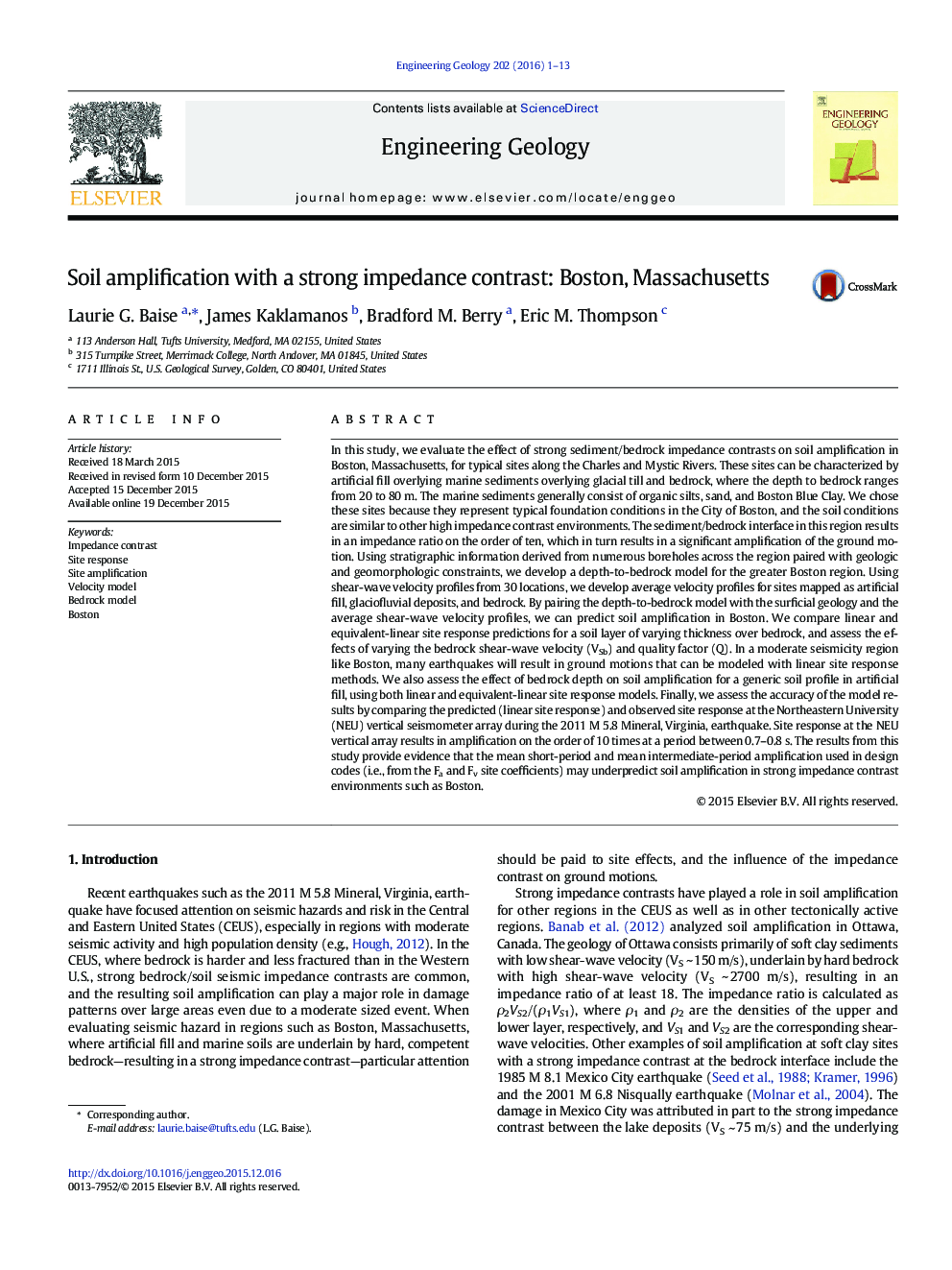| کد مقاله | کد نشریه | سال انتشار | مقاله انگلیسی | نسخه تمام متن |
|---|---|---|---|---|
| 4743168 | 1641783 | 2016 | 13 صفحه PDF | دانلود رایگان |
• Site response for a region with a strong impedance contrast.
• Validation of site response using recorded ground motions.
• Velocity model and depth to bedrock model for Boston, Massachusetts.
In this study, we evaluate the effect of strong sediment/bedrock impedance contrasts on soil amplification in Boston, Massachusetts, for typical sites along the Charles and Mystic Rivers. These sites can be characterized by artificial fill overlying marine sediments overlying glacial till and bedrock, where the depth to bedrock ranges from 20 to 80 m. The marine sediments generally consist of organic silts, sand, and Boston Blue Clay. We chose these sites because they represent typical foundation conditions in the City of Boston, and the soil conditions are similar to other high impedance contrast environments. The sediment/bedrock interface in this region results in an impedance ratio on the order of ten, which in turn results in a significant amplification of the ground motion. Using stratigraphic information derived from numerous boreholes across the region paired with geologic and geomorphologic constraints, we develop a depth-to-bedrock model for the greater Boston region. Using shear-wave velocity profiles from 30 locations, we develop average velocity profiles for sites mapped as artificial fill, glaciofluvial deposits, and bedrock. By pairing the depth-to-bedrock model with the surficial geology and the average shear-wave velocity profiles, we can predict soil amplification in Boston. We compare linear and equivalent-linear site response predictions for a soil layer of varying thickness over bedrock, and assess the effects of varying the bedrock shear-wave velocity (VSb) and quality factor (Q). In a moderate seismicity region like Boston, many earthquakes will result in ground motions that can be modeled with linear site response methods. We also assess the effect of bedrock depth on soil amplification for a generic soil profile in artificial fill, using both linear and equivalent-linear site response models. Finally, we assess the accuracy of the model results by comparing the predicted (linear site response) and observed site response at the Northeastern University (NEU) vertical seismometer array during the 2011 M 5.8 Mineral, Virginia, earthquake. Site response at the NEU vertical array results in amplification on the order of 10 times at a period between 0.7–0.8 s. The results from this study provide evidence that the mean short-period and mean intermediate-period amplification used in design codes (i.e., from the Fa and Fv site coefficients) may underpredict soil amplification in strong impedance contrast environments such as Boston.
Journal: Engineering Geology - Volume 202, 4 March 2016, Pages 1–13
